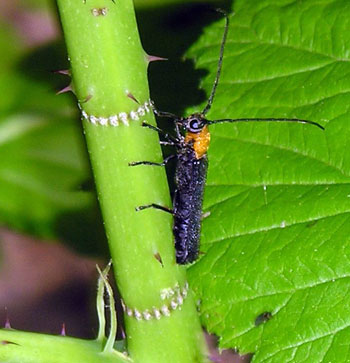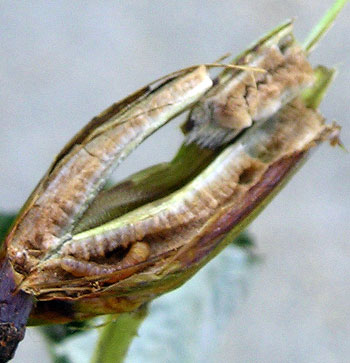Controlling raspberry cane borers
Wilting shoot tips signal that this easy to control pest has found your raspberry patch.

This time of year, Michigan State University Extension educators, including myself, get calls from homeowners complaining that the shoot tips of their raspberries are dying. I ask if there are two rings cut into the stem below the wilting. If the answer is yes, I know they have the raspberry cane borer.
Raspberry cane borer, Oberea bimaculata Oliver, is a beetle pest of raspberries that is widespread in Michigan. The beetle lives its life feeding on raspberries. The adults emerge in June. They feed on the tender shoot tips of new raspberry canes. The females lay their eggs about 6 inches below the tips of the new primocanes (first year shoots emerging from the ground). First, she chews two rings around the stem about 0.5 inches apart. Then she lays an egg between the girdles. The girdling causes the stem tip to wilt.
Control is easy and organic, just remove the portion of the stem between the two girdles and throw it in the trash. If not removed, the larvae burrows down the cane to the base and into the crown the next summer. Affected canes are weak and often break or die the next year. The larva pupates in the soil and emerges the next year to attack the shoot tips.
This pest seldom requires insecticide sprays and can be controlled by scouting for wilting shoot tips in the summer and removing the stem sections with the eggs before the larvae can burrow into the cane. If there is a severe pest infestation, pesticide sprays are targeted on the adults in the immediate prebloom period, just before the flowers open.


Left, Close up of raspberry cane borer adult and recently chewed girdles, marking where the egg will be laid. Right, Raspberry cane borer larvae boring into raspberry cane. Photo credits: Mark Longstroth, MSU Extension



 Print
Print Email
Email
